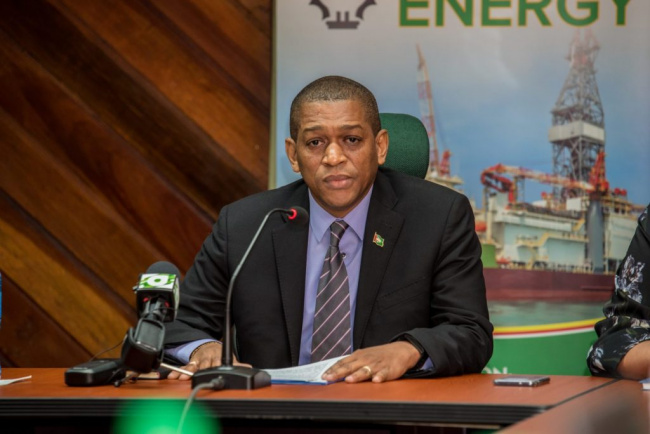Energy Dept completing ‘gas to power’ feasibility analysis
Explore Media Centre
Energy Dept completing ‘gas to power’ feasibility analysis
Published: November 12, 2018
Energy Dept completing ‘gas to power’ feasibility analysis

(OilNow) As the Government of Guyana continues to look at ways to garner cheaper energy from oil and gas finds offshore, the Department of Energy is undertaking a feasibility study.
Dr. Mark Bynoe, Director of the Department of Energy, on Thursday told the media that the study will serve more than one purpose. It will “not only determine where the gas pipe should be landed but also to place within the context of a much broader industrial park…(it will) pursue a strategic framework for the evolution of our country’s development,” he noted.
The use of natural gas for energy generation will see a significant reduction in energy costs which is expected to boost manufacturing and investment. Electricity tariff in Guyana currently hovers around 25 to 35 US cents per kilowatt hour. It is said to be one of the highest in the Caribbean due to the dependence on imported fossil fuels.
The Government in 2017, prior to the establishment of the Department of Energy, paid a consultancy firm: Energy Narrative, US$70,000 to conduct a desk study on utilizing natural gas for electricity generation. The company was tasked with examining the options, impact and key considerations of transporting and utilizing natural gas.
The Energy Director told OilNow that the current feasibility study builds on the 2017 version and will examine the associated costs and where to land the pipelines.
“It is not just a case of bringing to shore gas, it is the contingency plan around that and the supporting infrastructure that we need to put in place as we go forward,” Dr. Bynoe pointed out.
Prior to the establishment of the Dept of Energy, ExxonMobil had confirmed that there is sufficient natural gas in the reserves to supply a 200-megawatt electricity plant and the Government was engaged in negotiations to have natural gas come onshore by 2022.
Discussions have been ongoing between ExxonMobil and the Guyana government for a proposed project to utilize some of that natural gas for energy generation by the Guyana Power and Light (GPL) Company, the country’s sole electricity generating entity.
Dr. Bynoe on Thursday disclosed that the Department is still working with ExxonMobil but “we have to first do a couple of things.”
He said for example, “the discussions surrounding sub-surface; we need to have a better understanding in terms of volume. Also, we have to have a better understanding of future planning for any landing of said pipeline.”
He disclosed that ExxonMobil is currently conducting a LIDAR study for the entire Region Four –something which will be beneficial to the Department as it look at the various possibilities.
LIDAR, which stands for Light Detection and Ranging, is a remote sensing method that uses light in the form of a pulsed laser to measure ranges (variable distances) to the Earth. These light pulses generate precise, three-dimensional information about the shape of the Earth and its surface characteristics.

